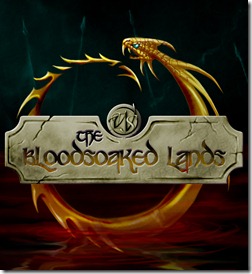 Stemming from my last post on fantasy product design a reader asked me to go into a little more depth with regards to market research for fantasy products. As they put it there is a great deal of difference between providing a game world for your mates and providing a game world for the larger fantasy community. So if you are just jumping into this conversation and wanting to catch up on part one or part two then check out those links, otherwise let’s get down to business …
Stemming from my last post on fantasy product design a reader asked me to go into a little more depth with regards to market research for fantasy products. As they put it there is a great deal of difference between providing a game world for your mates and providing a game world for the larger fantasy community. So if you are just jumping into this conversation and wanting to catch up on part one or part two then check out those links, otherwise let’s get down to business …
To me there are two angles of research that you need to invest time in, firstly is what type of product do people want, this includes aspects such as content, format, accessibility, look & feel, design and after sales service. Secondly are aspects such as how will you look to distribute your product, how will people find you, what brand image you are looking to provide to the community, what position your product will have and who your competition is. Now both points one and two aren’t comprehensive they are just a small list of aspects that you can look at if you are interested in conducting some market research for producing a product.
Now I do recommend doing research prior to production if you are actually looking to make your product at the very least break even or preferably profitable, and I provide this information happily as from my career and educational background I have seen too many businesses, products and friends fail from ignoring this crucial aspect of product development.
In this instance a great deal of my research was done with a program called Market Samurai, which is an internet market research program. Through this I was able to identify keywords that people used to search for fantasy and RPG related topics. It tells you how many searches there are on each of the keywords and allows you to look up the top 10 ranking sites for each keyword as well as being able to compare your own site against your competitors if you have one. Through this I was able to see what people were looking for and talking about. In addition this program also lets you look up content that people have written regarding your topic of interest. This is a great starting point to develop your research strategy with.
From here I also searched on bloggers networks, RPG forums and google groups; these are invaluable as they represent the forefront of the community’s opinions good and bad. The added advantage of these is that they will invariably have RSS feeds to subscribe to so that any updates on the topics that you believe are relevant come straight into your reader for you to peruse. A note on forums and user groups I found I got a better response from just looking at what people said about products and design options as opposed to just asking for info, but that’s not to say openly asking those users questions to gain direct answers is something to be avoided, far from it.
In conjunction to this buy a few competitor products or download samples of them, read reviews on them and perform a competitor evaluation, a great diagram that you can produce is called a perceptual map, this will allow you to make sure you are hitting an area where there is little or preferably no competition. Places like RPG Now show you what types of products are out there, it will also show you what the quality and price point of your competition is, as well as what information they provide in the products.
Also consider where you are wanting to sell your products, thus picking a market will help narrow down your alternatives, for example where I live there isn’t a huge RPG community and the local games stores in my city tend to be geared towards either card games or miniatures, which incidentally could be an avenue I could have looked at but chose not to at present, and I realised I needed to hit the American market, thus I needed to find out what floats the boat of the American gamers and integrate that into what I was looking to produce.
So when you’ve melded all of that together the last point is to remember that this entire process is actually a loop it doesn’t go from point A to point B and end there. The last part of the loop is feedback, recognise feedback and take it into consideration, then alter what you have if needed. At a variety of stages through the development of The Bloodsoaked Lands I had feedback from people and each time I took a step back and the majority of cases I would end up saying ‘yea your right it’s missing this’, or ‘true it does focus too much on that’ as a result of the feedback and then set about rectifying the issues to create a better product.
Well that’s a brief look at market research, feel free to make a comment on anything that you’ve read or if you’d like me to cover some other areas in more detail then leave a message below.
